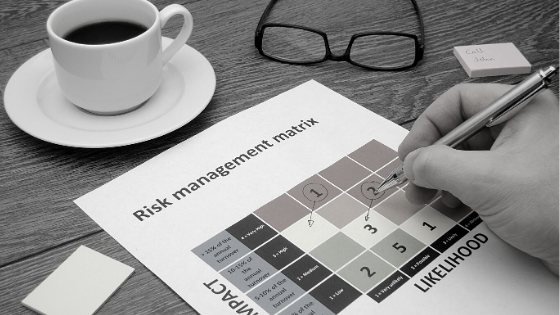Starting your own business can be one of the most exciting and challenging moments of your life. Getting a new idea into the market, innovating something that is already there or just doing some right. There are a million different ways you can kick off your next adventure.
The excitement of growth and sales, that is normally where the focus is. With this can also bring some challenges down the road.

One key area of any business, new or old, that can be left behind until it becomes a problem, a hurdle in a sale or acquisition is risk.
We get it, no one likes talking about things that can go wrong. However, if you have a good structure from the beginning on how to identify and manage the risks your business faces as it changes and grows, you will have a much smoother journey when the sales explode.
Here are 3 easy to implement steps and structures to ensure you stay on the front foot with your business’s risk and mitigate what you can.
Do a Risk Assessment
The humble risk assessment matrix is an age-old tool that can easily help you understand your risk and then, what to do about them.
On the Y axis you have the consequence. This is how mild or severe the possible consequence would be if a risk was to become a reality.
On the X axis you have the likelihood of a risk actually occurring from Low to High.
Once you have put your matrix together, the simple part is, to write all of the risks you can possibly think of that your business may face in the boxes based on those two simple criteria.
Now, I am a big believer in doing it on your own, but having as many people as you can do it. If you are a one person set up that’s fine, however, if you have anyone else in your business in key roles, it is a great idea to ask them to fill one out too.
That way, you will get a well rounded view of the business and not just the areas your mind might be latching onto. It is best to do this exercise in a very collaborative way and can be done over two or three sittings. Just make sure you set a time it has to be done by. Remember, risk is an ever changing beast so don’t worry if it isn’t perfect. Step three will cover off the future.
Once you and anyone else who is doing a matrix is finished, bring them all together into one mega risk matrix. Then, move onto step two!
Understand and Mitigate
Now you have your Matrix it is time to critically approach each risk and make a plan.
Firstly, you can do this on your own if it’s your business or invite the key decision makers to collaborate.
You need to list the risks that you have come up with from most likely to occur with a possible server outcome, down to the least likely to occur with mild consequences. This is now the list you will use to get on the front foot and mitigate what you can.
The first place to start is risk acceptance.
Working from the top down keeping in mind the previous exercise around likelihood and consequence, decide which of the risks you are currently happy to accept. This means, you are comfortable with them and don’t need to mitigate further, yet.
Once, that is done, it is time to establish what isn’t acceptable and how to mitigate/reduce or nullify.
The two options are quite simple.
Mitigate or reduce can be simple processes like;
- Reduce the amount of times that action occurs in your business.
- Have more than one person check the action to ensure a good outcome.
However, if there risk is something that must continue and is business critical, it is good practice to look into whether you can insure against it. There are many different types of business insurance no matter where you are that are designed to protect your business if the event may occur.
For example, if you are a Professional, like an architect or lawyer providing professional advice for a fee or service, Professional Indemnity Insurance is designed to cover your legal costs if you were to be taken to court for making an error or mistake. Some other products to consider are, Crisis Management Insurance, Key Man Insurance, Cyber Insurance and Public Liability Insurance just to name a few.
Once you have gone through the list from top to bottom, you have completed your first Risk Assessment!
Structure!
The final step to good risk mitigation is structure. Congratulations on completing your first risk assessment however, this is the first of many.
Moving forward, it is good practice to have a regular and structured time put aside to revisit your Risk Matrix and amend as your business grows and changes. If you have a larger business, a Risk Committee of key employees can help maintain a holistic view of the business during these exercises.
Also consider, applying the same structure to things like;
- New hires into the business
- New product lines
- New sales approach
In the modern world of business, risk is an ever changing environment. If you follow the 3 steps above, it will help you get a better understanding of the risks you may face. Then, if they do come up, you will be in a better position to combat and deal with the future.




















